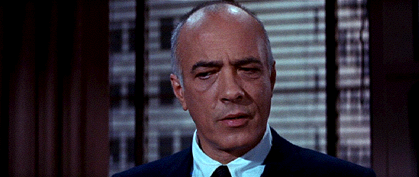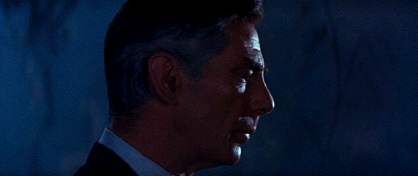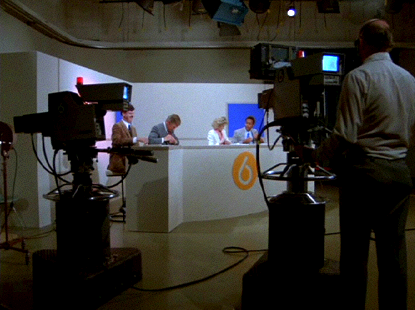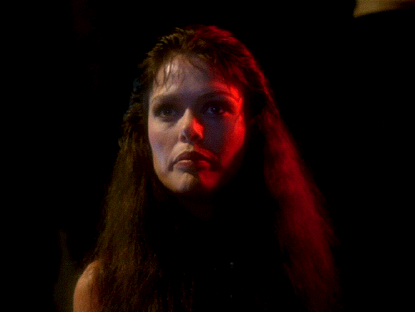Director: Robert Gordon
Writers: Aben Kandel, Herman Cohen
Producer: Herman Cohen
Cast: Michael Gough, Jeanne Cooper, Rod Lauren, Jerome Cowan, Virginia Grey, Elisha Cook, Jr., Edward Platt, Douglas Henderson, Marianna Hill, Warrene Ott, Oren Curtis, Byron Morrow, Eilene Janssen, Joseph Mell, Jerry Douglas, Eric Stone, Zamba (the lion), (and uncredited cast members) Claudia Brack, George Barrows, Dani Lynn, Susan Slavin, Herman Cohen, Daniel Kurlick, Michael St. Angel
Michael Conrad (Michael Gough) is the proprietor of the Conrad’s Animal Kingdom zoo in Los Angeles. Conrad is absolutely devoted to his animals and treats them with kindness and reverence. The wild animals are so docile in Conrad’s care that he can control them. Whenever anyone threatens to disrupt his life or his zoo, Conrad uses the most dangerous of his animals to kill the offender.
The Flashback Fanatic movie review
Producer Herman Cohen was on quite a roll of youth-oriented horror films in the 1950s beginning with such attention-getters as I Was a Teenage Werewolf (1957) and I Was a Teenage Frankenstein (1957). The titled monsters may have been teenagers, but they were made into killers by the schemes of the evil adults that controlled them. Cohen would continue with his teen-angst terrors into the next decade. However, those ’60s productions were more focused on the middle-aged antagonists responsible for all of the villainy. The youths were no longer the title subject or the main drivers of the plot. While those later films seemed to fixate almost exclusively on the petty ambitions and egos of their middle-aged fiends, they still depicted young people being exploited, traumatized, or victimized by their elders.
In 1963’s Black Zoo, Cohen had once again concocted a crazy scenario that let actor Michael Gough off his leash to chew the scenery as only one of my favorite movie madmen can. As in two previous Cohen productions, Horrors of the Black Museum (1959) and Konga (1961), Michael Gough’s lead performance as another obsessive and amoral asshole provides most of the entertainment value. That’s plenty for this fan of actors you love to hate.
Cohen and co-writer Aben Kandel usually reworked premises from previous classic horror films for their own victimized-youth productions. 1933’s Murders in the Zoo seems to be the probable inspiration for Black Zoo. Both films feature a maniacal zookeeper killing his enemies with wild animals. The novelty of those beasts sharing a lot of screen time with the actors was something to distinguish each film from its competition in the genre.
That is not to say that Black Zoo is a remake of the earlier film. Like all of the other Cohen-Kandel stories, Black Zoo is a variation on a horror trope that goes its own demented way. In the case of this film, the villain does not just use wild animals to dispose of his enemies; he actually controls the beasts. At first it seems that this ability is just the unlikely result of zookeeper Michael Conrad’s love and care of the animals. There is a later suggestion of some mysticism involved. Conrad is a member of an eccentric animal-worshipping cult. There is no direct correlation stated between Conrad’s cult activity and his uncanny control of his beasts. However, being the Michael Gough fan that I am, I can explain almost any antics his despicable characters perpetrate.
Although I can contrive some credibility for the feats a Michael Gough villain performs, I certainly can’t justify his absolute assholery. (That damned spell-check is even more anal than I am. Assholery is a word, dammit!) It’s bad enough that Gough’s Michael Conrad makes assassins out of his zoo animals. Conrad also treats Carl (Rod Lauren), his mute, teenaged zoo attendant, like a slave. He gets totally pissy about his wife, Edna (Jeanne Cooper), having a few drinks with dinner, and then he flies into a rage when she shows any concern for the sad, mute Carl. Control freak Conrad finally stoops to get his own hands dirty with domestic violence. Amazingly, this abuse turns out to be some very effective foreplay. One murdered casserole and a vicious backhand later, Conrad and Edna are lip-locked in the kitchen. Where’s the justice? This is just another fine example of why we all love to hate Michael Gough villains.
That kitchen scene leaves us wondering what the hell Jeanne Cooper’s Edna ever saw in the selfish Michael Conrad. Dysfunction between the featured couple is another mainstay of earlier Cohen-Kandel horror films. Like the male heel in the other stories, this film’s Michael Conrad can turn on the charm when he wants to put up a good front. I expected him to start hitting on the cute art students that are sketching animals at his zoo. Gough’s Dr. Decker in Konga would have probably been making the moves here on young Audrey (Marianna Hill). Yet this movie’s Michael Conrad seems devoted only to his zoo animals.
Rather surprisingly, when Audrey tries to flirt with the handsome, mute Carl, this never leads to anything more than giving Conrad another opportunity to be the belligerent boss. It would have seemed like the perfect opening for more character conflict by having the lonely Carl wanting more out of life than being Conrad’s bullied henchman. This story focuses almost entirely on the “family” of Michael Conrad, wife Edna, young Carl, and the zoo animals.
Those featured animals are usually shown sharing scenes with the actors. Aside from our old friend, the homicidal gorilla suit (George Barrows this time) from Konga, the other dangerous beasts are big cats. We are not only treated to tiger and lion attacks, we also get to see assorted huge felines lounging on the furniture in Conrad’s living room as he serenades them with his pipe organ. They are even allowed to attend a funeral rite Conrad conducts for his deceased tiger in a foggy forest. There are also a couple scenes where the lion is walking right past Michael Gough without the benefit of any trick photography. Maybe it helped the lion to keep his cool sensing that Michael Gough himself was actually very fond of animals. That took a helluva lot more nerve on Gough's part than petting a baby chimp back in Konga!
Michael Gough’s co-star, Jeanne Cooper, is required to play a character almost as offbeat as the crazed Conrad. As Edna, she had a trained chimp act that she was developing before she married Conrad and devoted her show solely to appearing in Conrad’s zoo. Jeanne Cooper’s acting chops are given quite a workout against Michael Gough in the aforementioned dinner demolition scene. This squabble is mostly covered in a few long takes that show how veteran performers can keep things moving with the spirited back and forth of their performance. That ability to handle long dialogue exchanges must have been a great asset to Jeanne Cooper for her later soap opera career in her forty-year-long role of Katherine Chancellor from 1973 to 2013 on the CBS television series The Young and the Restless (1973 — present).
Two other familiar television faces appearing here are Edward Platt as Chief Detective Rivers and Elisha Cook, Jr., as zoo attendant Joe. Platt was immortalized later in the decade playing another frustrated authority figure, The Chief, on the spy-spoof series Get Smart (1965-70). Cook had already established himself as mild-mannered or victimized film characters since the 1930s. From the mid-1950s through the mid-1980s, Cook was also a familiar guest star in a multitude of television series.
While producer Herman Cohen’s earlier Gough-starring films, Horrors of the Black Museum and Konga, get more attention, this 1963 production really delivers the villainy seasoned fright flick fans can relish: zookeeping zealotry inspiring animal attacks and casserole carnage. Black Zoo is yet another cockeyed horror premise valiantly legitimized by the great Michael Gough at his beastly best.


































